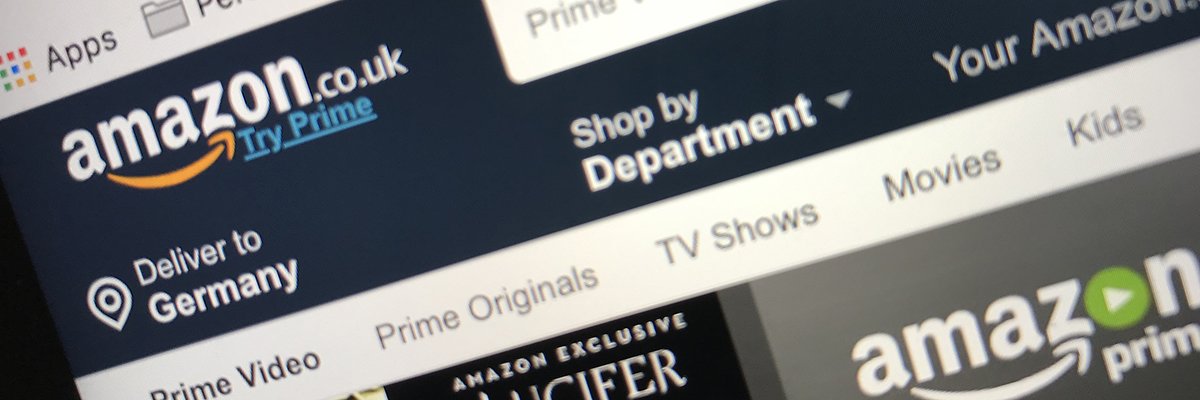Amazon has tripled its profits and seen its revenue rise by 37% compared to a year ago, as the Covid-19 coronavirus pandemic continues to fuel demand for the goods and services it sells.
The online retail giant’s third-quarter results mark a continuation of the trends seen in the previous two quarters, whereby its business has benefited from unseasonably high demand for the goods it sells, as the pandemic has seen people across the world confined to their homes.
The company posted a net income of $6.2bn, up from $3.1bn in the third quarter of 2019, against a revenue of $96.15bn, which represents a marked increase on last year when it banked $70bn during the third quarter.
During a conference call with analysts, transcribed by Seeking Alpha, Amazon’s chief financial officer, Brian Olsavsky, said its revenue and profit growth during the quarter had been fuelled by “strong demand across all its major product categories”, including “increased engagement” by users of its media streaming service Prime Video.
The firm also continues to incur costs relating to its efforts to meet this demand, including staff recruitment and expanding its delivery network capabilities, but this has not prevented it from achieving “higher than expected profitability” during the quarter, he added.
In a separate statement, accompanying the results, Amazon CEO Jeff Bezos, said the final quarter of 2020 is also shaping up to be an even busier one than usual for the firm, as it prepares for the Christmas rush.
To this point, the company said it is forecasting a 28 to 38% year-on-year (YoY) uplift in revenue for the fourth quarter, with it expecting to generate between $112bn and $121bn during the Q4 alone. Last year, its fourth-quarter revenue hit $87.4bn.
The company is also anticipating profits in the region of $1bn to $4.5 bn for Q4. If its profit forecast comes in at the higher end, the firm will have experienced flat-to-modest YoY profit growth compared to the final quarter of 2019, but Amazon is expecting to absorb around $4bn in Covid-19-related costs during the three months to December 2020 by way of explanation.
In his statement, Bezos also challenged its bricks-and-mortar competitors to follow its lead by increasing their US employee’s minimum wage pay rates, given Amazon has been paying its workers $15 an hour for the past two years.
“Offering jobs with industry-leading pay and great healthcare, including to entry-level and front-line employees, is even more meaningful in a time like this, and we’re proud to have created over 400,000 jobs this year alone,” he added.
“We’re seeing more customers than ever shopping early for their holiday gifts, which is just one of the signs that this is going to be an unprecedented holiday season. Big thank you to our employees and selling partners around the world who’ve been busy getting ready to deliver for customers this holiday.”
Profit and revenue growth continues at AWS
Away from its online retail activities, the company’s cloud arm – Amazon Web Services (AWS) – continues to go from strength to strength, with third-quarter revenue up 29% on last year to $11.6bn. It also brought in a profit of $3.5bn, up from $2.2bn during the same quarter in 2019.
During the analyst conference call, Olsavsky expanded on some of the trends the company has seen in how the pandemic appears to be affecting the adoption of cloud services by enterprises, with some moving to accelerate their migration plans, while AWS’s backlog of multi-year cloud deals continues to grow.
However, depending on the industry, some firms are in what Olsavsky terms a “holding pattern” with their cloud adoption plans.
“There are anomalies in different industries going on this year – travel and hospitality are down. A lot of companies are in holding pattern in middle and some are doing really well, such as video conferencing, gaming, remote learning and things tied to entertainment,” he said.
“The majority of the companies though are looking for ways to cut down on expenses. Going to cloud is a good way to cut down on expenses long-term. [Customers are] trying to cut down on their short-term costs in the cloud, and tune their workloads. We’re helping them do that.
“We think that is good for the customer and, therefore, it will be good for us long-term.The YoY growth in absolute dollars this quarter were the largest we’ve ever seen and we feel good about the state of the business, as well as the state of our salesforce and their ability to drive value during this period,” he added.













